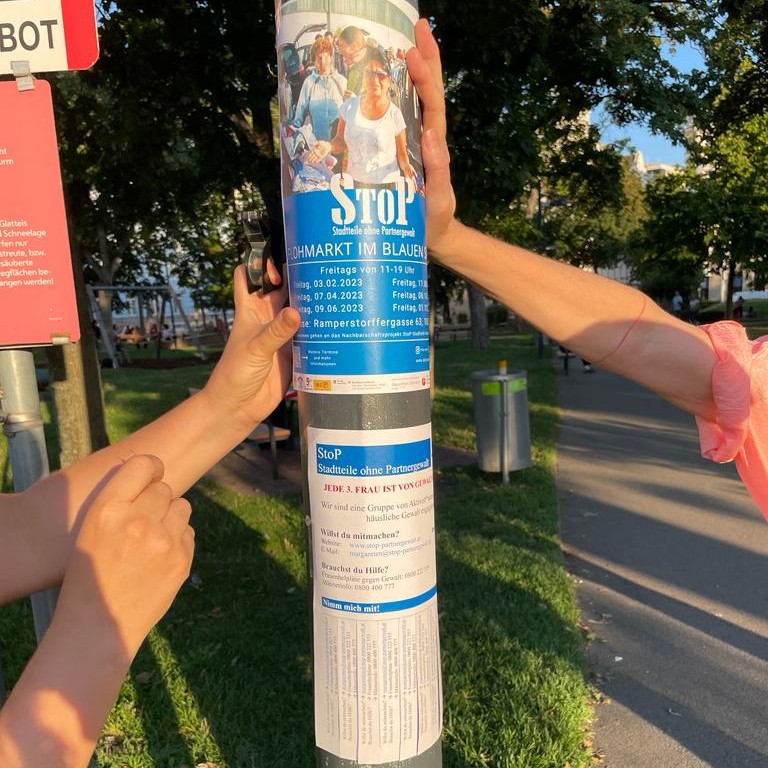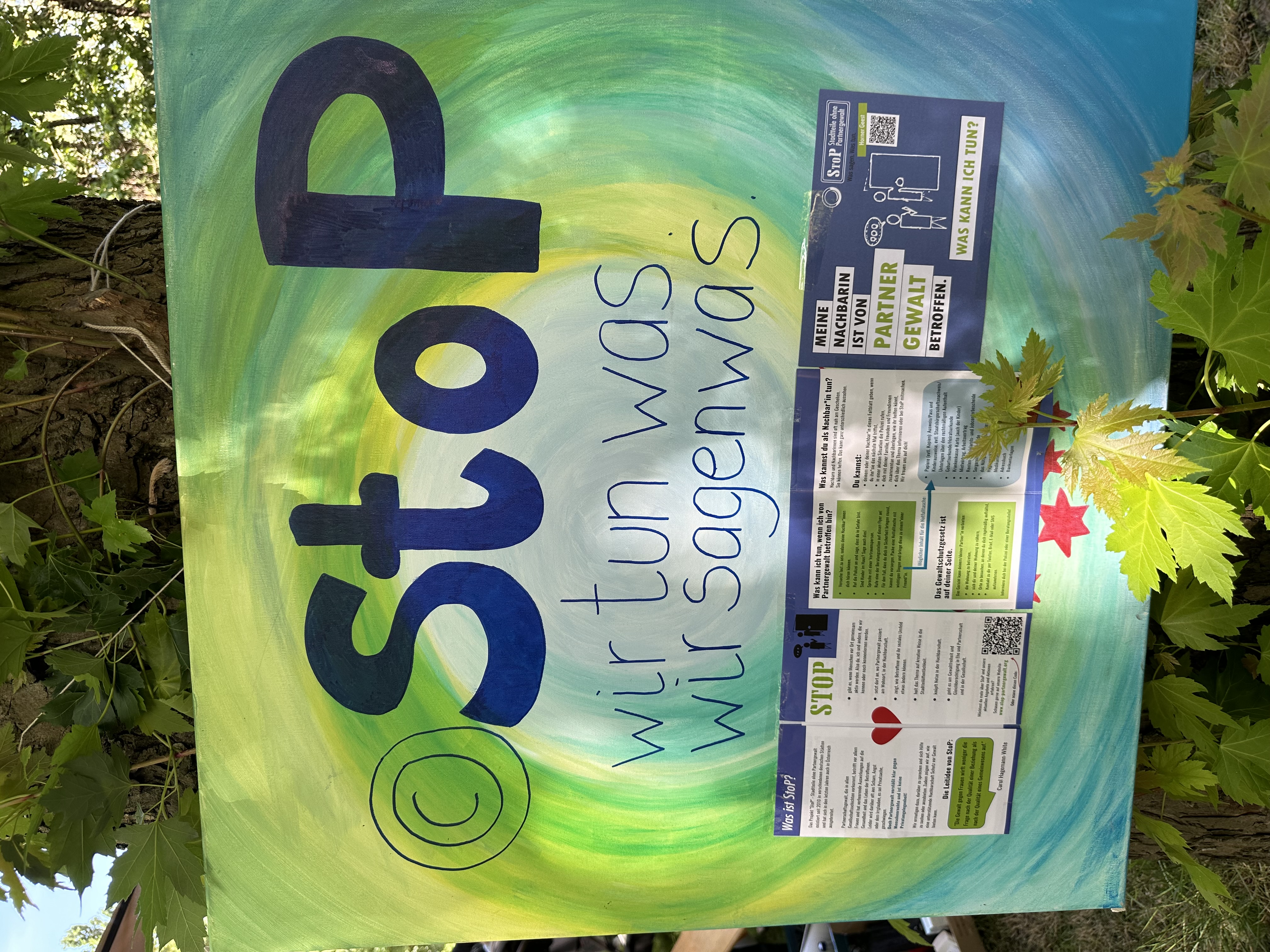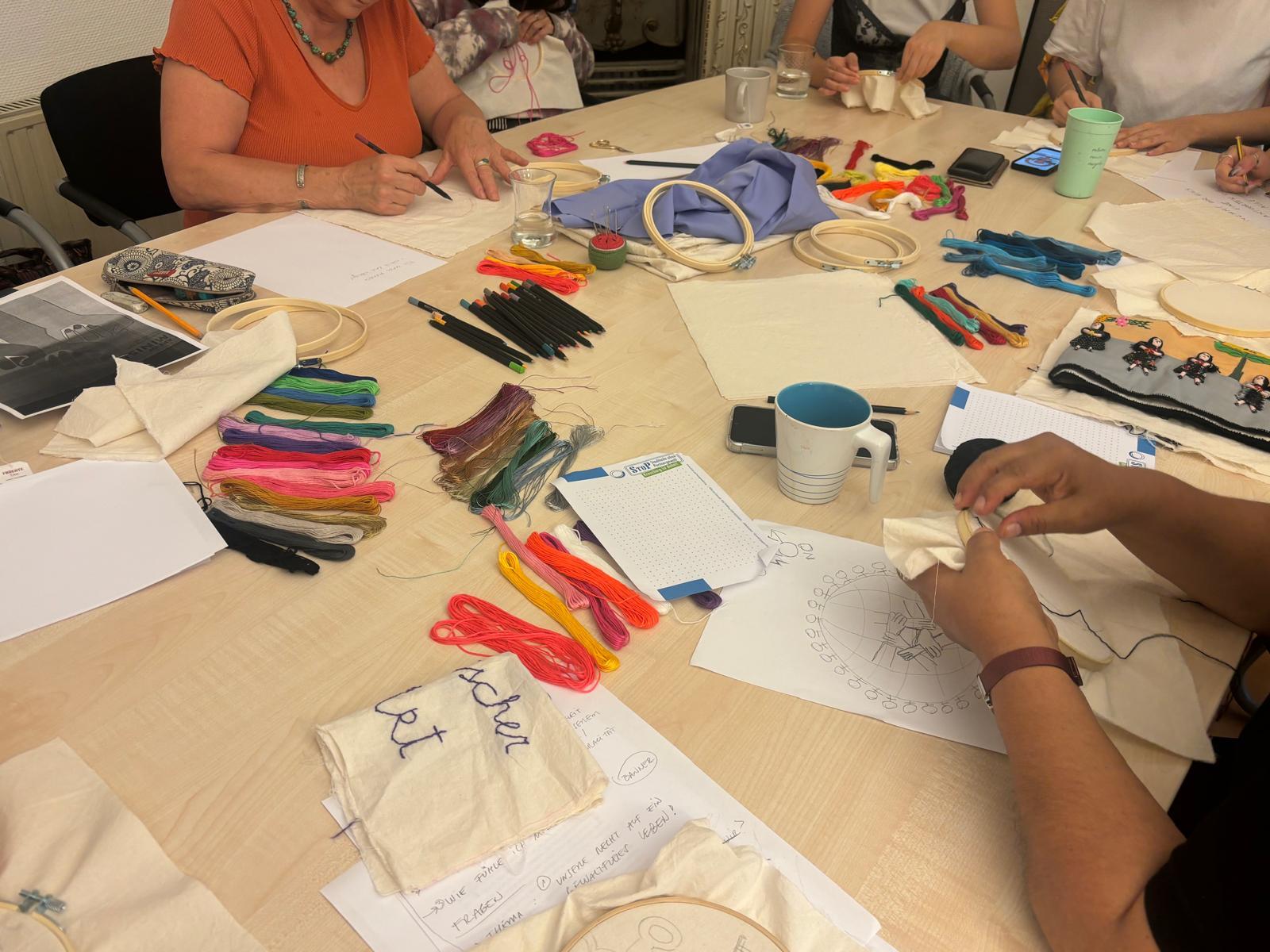StoP work is community-based, preventive and transformative, not individual casework or therapeutic. However, an important aim of the work is to encourage victims of intimate partner violence (and also perpetrators) to break the silence and seek help. If StoP is known and effective, people are likely to turn to the organisers or members of the StoP community group for support and advice. It will also happen that active neighbours from the group themselves will open up and talk about their own experiences of violence.
In addition to organising with civil society and building groups and networks, individual counselling and support should be available. This means that organisers and active neighbours need some skills, they need to know what to look out for when talking to victims or perpetrators. The highest priority is always the protection and safety of the ones who are experiencing or at risk of violence and their children. Perpetrators' behaviour and risk factors need to be known and assessed.
It is important to note that people involved in StoP are not usually trained counsellors; they act as peers to support others. Crisis intervention or dealing with perpetrators requires professional knowledge and action and is not the focus of StoP work.
However, there are several possibilities, some of which are complementary, the main one being that StoP (organiser, neighbours, network members).
acts as a first, easily accessible contact point, not taking on major counselling work itself, but providing information about relevant agencies and putting people in touch with them. Another option is to attract experts from central service agencies to provide decentralised counselling in the local community. For both options, the existence of cooperative networks or at least contacts to relevant institutions is helpful. Another possibility is that the StoP project has enough money to set up its own additional counselling service.
Counselling (Beel 2023; Zerbe Enns 2012) can provide information about rights and entitlements as well as personal stabilisation or, in the case of perpetrators, support in taking responsibility and changing behaviour. The counselling should be free of charge and anonymous, i.e. no personal data is collected.
Empowerment is an important principle and aim of counselling for victims of violence (Heywood/Mulveen 2021). However, it is not a matter of an individualistic concept of empowerment, because then there is a risk of moralising or blaming. Rather, the counsellor should act as an faciltator, able to combine personal empowerment with a broader understanding of the situation.
„If social workers have nothing but an individualistic understanding of empowerment, they will end up as moralising agents, rather than as facilitators who are able to link the individual empowerment to a broader comprehension of situatedness.“
Another related principle for counselling survivors is taking their side. This does not mean blind faith or naivety, but rather an emphatic and supportive attitude. It includes acceptance of the person and their story. The interests and needs of the women/survivors are central. They are the experts on their situation and their individual ways must be respected. They have probably experienced too many times when they were not believed or their perceptions and wishes were devalued. It is not a question of giving good advice, but of helping women to help themselves, to discover together what they want, what they need and what they might already have. The task is to find out and to support them in doing so.
Some Guidelines for individual support
- safety first
- risk assessment
- easily accessible
- free of charge
- confidential
- empowerment
- solidarity
- respect
- eco mapping
- connect to others
Methods that can be used include, for example, individual network mapping, which is used to explore the existing or mobilisable social support of the person seeking advice, and to identify and remove individual barriers to accessing this support. Broader eco-mapping is also helpful. By asking systematic questions, the person can become aware of their resources that can be used for support (contacts and skills in social, economic, cultural and institutional areas). The counsellor can also, with the person's consent, connect the person to resourceful, supportive people in the community, broadening and bridging the individual help-seeker's network relationships.
StoP is not about working with men as allies not as perpetrators. Therefore we do not do conselling in this area. There is a range of other organisations who offer advice.

Example
In Steilshoop, a supra-regional helpline was willing to provide an on-site helpline. In other neighbourhoods counselling sessions are conducted by the StoP staff themselves. For quite a few of the women concerned, a familiar counsellor and physical proximity seem to be very important. However, this work is very time-consuming and is not the focus of the community work. It would require additional resources. Active Neighbours say that ...
“My ears are now like satellite dishes, they can hear the silent screams.”
... and that they no longer feel helpless, but know what to say to helpseekers and survivors, and what to do. Neighbours who are active and trained in StoP are often asked for advice during spontaneous conversations in the playground or at a street party. They sometimes accompany women to a counselling centre or to court, or help them escape to a women's shelter, or they organise telephone chains to warn neighours when their violent (ex) partner turns up and ignores court orders to leave her alone.
Links
-
Survivors tell their experience with ALEG survivors network
-
Diana's Story with ALEG survivors network
-
Laura's Story with ALEG survivors network
-
Alina's Story with ALEG survivors network
-
Guide for women: Increase safety on stalking and cyberviolence against women (Project DeStalk)
-
Handbook for men concerned about their abusive behaviours towards those they love
-
Booklet information for men who are concerned about their behaviour towards their partners
References
-
Beel, N. (2023). Domestic violence. In N. Beel, C. Chinchen, T. Machin, & C. du Plessis (Eds.), Common client issues in counselling: An Australian perspective. University of Southern Queensland. https://usq.pressbooks.pub/counselling/chapter/domestic-violence/
-
Heywood, I., & Mulveen, J. (2021). From surviving to thriving: A feminist empowerment approach to supporting women affected by intimate partner violence. In C. Bradbury-Jones & L. Isham (Eds.), Understanding gender-based violence (pp. [chapter-specific page range if available]). Springer. https://doi.org/10.1007/978-3-030-65006-3_13
-
Leonardsen, D. (2007). Empowerment in social work: An individual vs. a relational perspective. International Journal of Social Welfare, 16(1), 3–11. https://doi.org/10.1111/j.1468-2397.2007.00475.x
-
Enns, C. Z. (2012). Feminist approaches to counseling. In E. M. Altmaier & J. C. Hansen (Eds.), The Oxford handbook of counseling psychology (pp. 434–459). Oxford University Press. https://doi.org/10.1093/oxfordhb/9780195342314.013.0016










